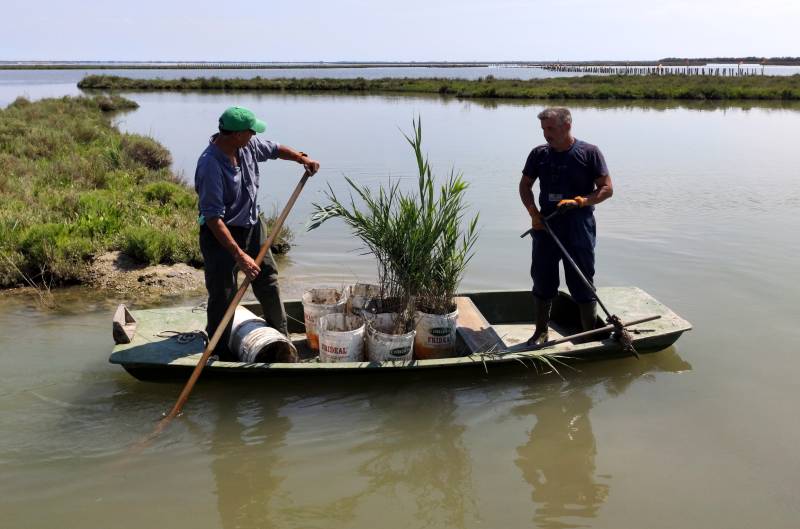Venice nurtures its lagoon back to health

Stay tuned with 24 News HD Android App

Venice may be famed for Saint Mark's Square or the Bridge of Sighs, but the Italian city has another jewel that is often overlooked: its lagoon.
Once home to a rich variety of fish and birds, mankind's meddling has raised the water's salt content dramatically.
However, an environmental project aims to restore it to its former glory, by introducing more freshwater.
"The idea is to recreate an environment that has been lost over time, because rivers were diverted out of the lagoon," Rossella Boscolo Brusa, the project's leader, told AFP.
The diversions were done to clean up swampy areas and combat malaria, said Brusa, a researcher at the Higher Institute for Environmental Protection and Research (Ispra).
But the move had an unforeseen consequence.
"It led to increasingly salty water and drop in the number of reeds, a very precious habitat for protected species, or species of commercial interest," she said.
It is peaceful out on the lagoon -- the only noise comes from the occasional tourist boat or the calls of a lapwing, sandpiper or egret.
Expert Adriano Sfriso, of the Ca Foscari University in Venice, said that over half the lagoon used to be reedbeds and salt marshes -- some 17,000 hectares (around 42,000 acres).
The city's Cannaregio district was even named after the plants -- "canna" being the Italian for "reed".
Today, only 34 hectares remain, he said.
- 'Refresh' -
The reeds tolerate some salinity.
But in the inner part of the lagoon, where the water should be between zero and 15 on the salinity scale, it is 30 -- not far off the amount found in seawater.
Dubbed "Life Lagoon Refresh", the project, launched in 2017, diverts a freshwater flow from the Sile River into the lagoon.
A man-made canal, operational since May, allows the flow of water to be modulated according to the project's needs or high tides.
Barriers made of biodegradable coconut fibres contain the freshwater in the target area and help the reeds develop.
In total, the project aims to restore about 20 hectares of reeds, Sfriso said.
Replanters Carlo Marchesi and Adriano Croitoru meticulously uproot reeds, taking care not to disturb the birds, before punting a few kilometres away to replant the clods.
"We're going to rebuild the lagoon as our great-grandfathers knew it, much richer in fish and birds," says Marchesi, 56.
Local fishermen and bird hunters are also roped in to help transplant seagrasses that will speed up the return of aquatic plants.
- 'Our world' -
"The lagoon is our life, our world," said Massimo Parravicini, head of the main amateur fishermen and hunters' association.
"If we preserve it, we will be able to enjoy it as much as possible, and pass it on to our sons," said the 58-year old, who regularly volunteers with the project, which he describes as "fundamental to the ecosystem".
The salinity is continuously monitored, as is the water quality, vegetation and fauna.
A large net is dragged vertically through the water as per the seine fishing method.
A team is tasked with tallying the species.
Some, such as the grass goby, are protected, while others, including the sea bream, mullet, flounder or branzino, are important for small-scale fishing, Luca Scapin, also a researcher at the Ca Foscari University, said.
The project, supported by the European Commission, also aims to draw birds such as the purple heron.
The results will be shared with sites with similar issues, from Hyeres in France, to Albufera in Spain, and the Nestos Delta and Porto Lagos in Greece.
